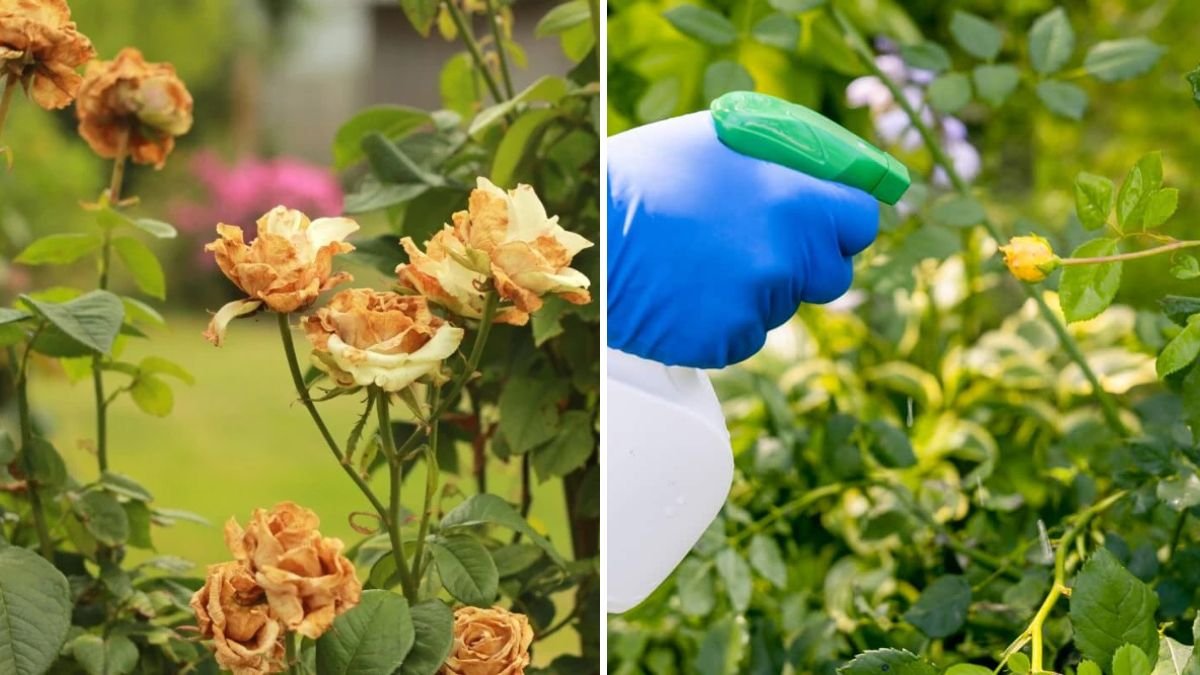Roses are among the most beloved flowers in the world, admired for their beauty, fragrance, and timeless elegance. However, their delicate petals and tender foliage often make them a prime target for pests, which can damage leaves, flowers, and even roots. While chemical pesticides can be effective, they pose risks to the environment, pollinators, and human health. Fortunately, there are natural, sustainable ways to protect your roses from pests while maintaining a healthy, thriving garden.
This guide explores how to keep roses pest-free naturally, covering pest identification, prevention, organic solutions, companion planting, and long-term rose care, ensuring your roses flourish without harmful chemicals.
1. Common Rose Pests and Their Impact
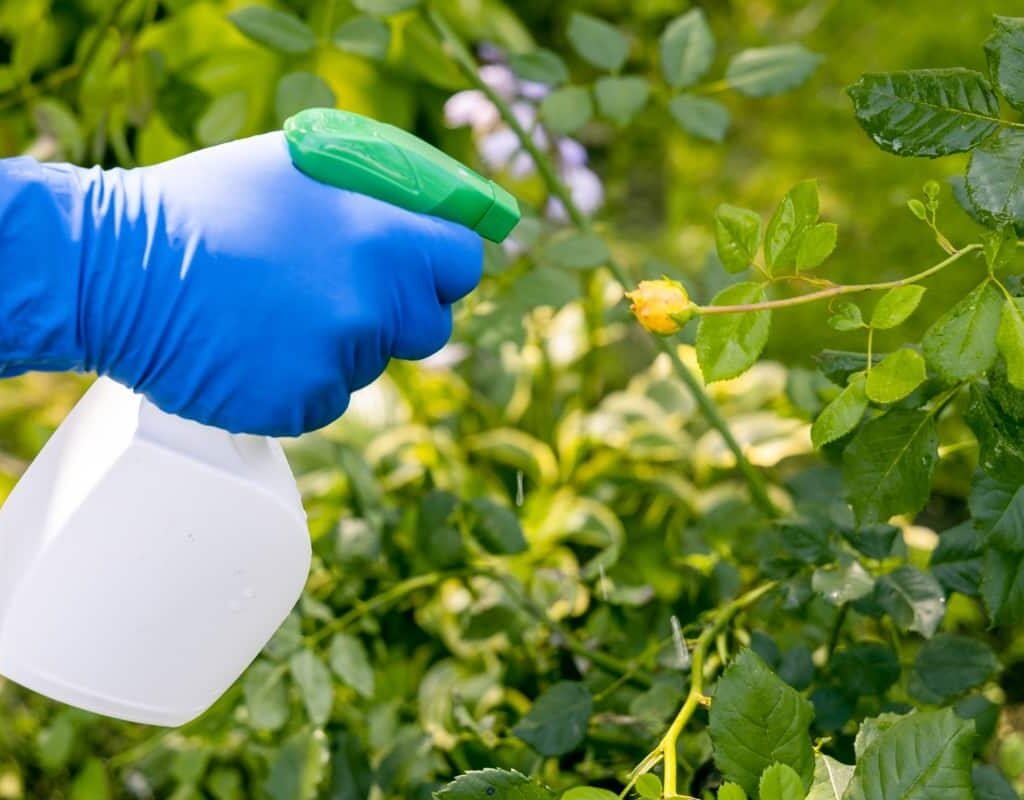
Understanding the types of pests that attack roses is the first step toward prevention:
- Aphids: Small, soft-bodied insects that cluster on new shoots and buds, sucking sap and causing curling leaves.
- Spider Mites: Tiny arachnids that form webs and cause yellow speckling on leaves.
- Japanese Beetles: Metallic green beetles that feed on leaves and flowers, leaving skeletonized foliage.
- Thrips: Tiny, slender insects that damage flower petals, causing discoloration and deformed blooms.
- Rose Slugs (Sawfly Larvae): Small, greenish larvae that chew holes in leaves.
- Scale Insects: Hard-shelled pests that attach to stems, sucking nutrients and weakening plants.
Tip: Regular inspection of buds, stems, and leaves helps detect pests early, preventing severe infestations.
2. Natural Pest Prevention Techniques
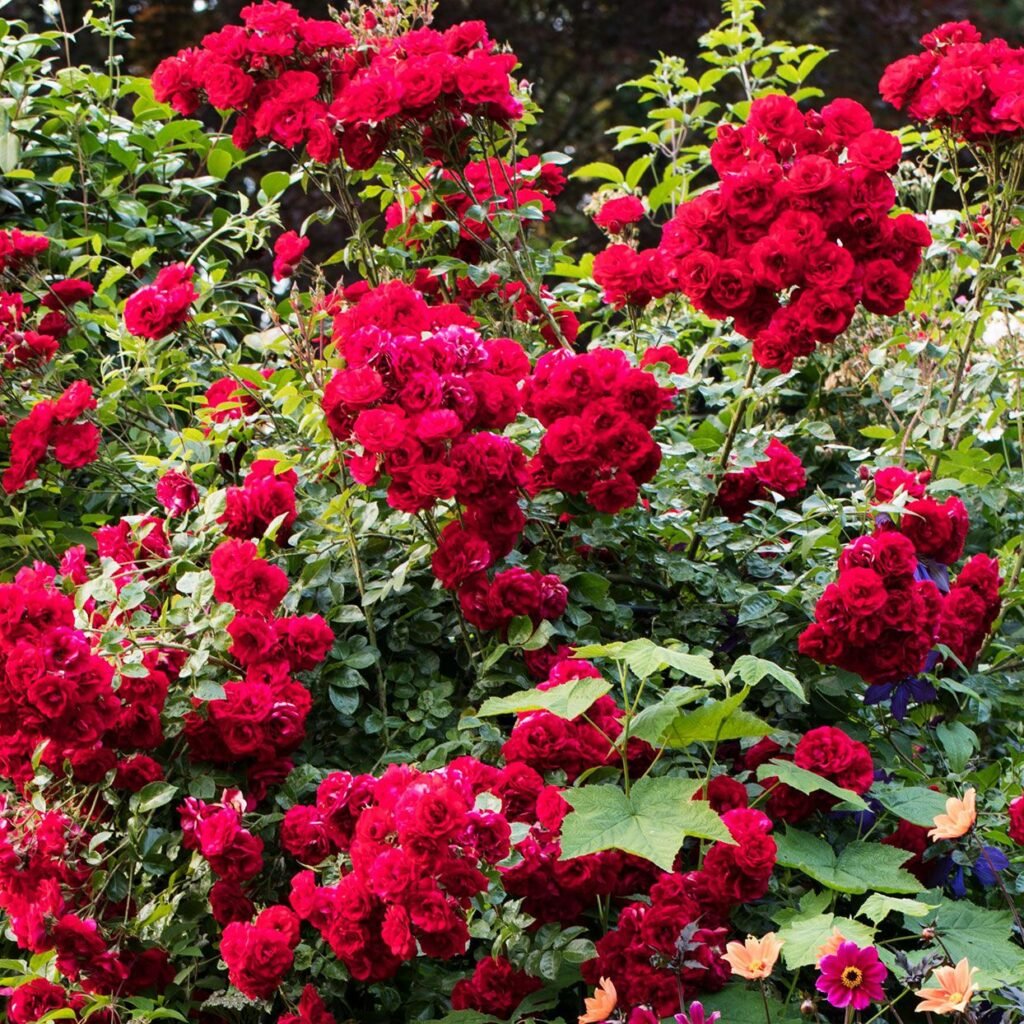
Preventing pests is easier than treating infestations. Implement these prevention strategies:
a) Maintain Healthy Roses
- Proper Spacing: Ensure adequate airflow by planting roses at recommended distances.
- Soil Health: Use nutrient-rich, well-draining soil to strengthen plants against pest attacks.
- Watering: Water at the base to avoid wetting foliage, which attracts pests and promotes fungal diseases.
b) Pruning and Cleaning
- Remove dead or diseased branches to prevent pests from nesting.
- Dispose of fallen leaves and flowers to eliminate breeding grounds.
c) Encourage Beneficial Insects
- Ladybugs, lacewings, and parasitic wasps feed on aphids and other harmful pests.
- Plant nectar-rich flowers nearby to attract these natural predators.
Tip: A well-maintained rose plant is far less susceptible to pest damage.
3. Homemade Natural Pest Solutions
Several natural remedies can control pests without chemicals:
a) Neem Oil Spray
- Effectiveness: Controls aphids, spider mites, and scale insects.
- Preparation: Mix 2 tablespoons of neem oil with 1 teaspoon liquid soap in 1 liter of water. Spray on leaves, stems, and buds every 7–10 days.
b) Garlic Spray
- Effectiveness: Repels aphids, beetles, and caterpillars.
- Preparation: Blend 2–3 garlic cloves with water, strain, and spray on rose plants weekly.
c) Soap Spray
- Effectiveness: Kills soft-bodied insects like aphids and thrips.
- Preparation: Mix 1 tablespoon mild liquid soap in 1 liter of water; spray thoroughly.
d) Chili or Cayenne Pepper Spray
- Effectiveness: Deters beetles and larger chewing insects.
- Preparation: Mix 1 teaspoon chili powder in 1 liter of water; add a few drops of soap to help adherence.
e) Companion Plants
- Marigolds: Repel nematodes and certain insects.
- Lavender and Rosemary: Deter aphids and beetles.
- Alliums (Garlic and Onions): Naturally repel pests through scent.
Tip: Apply sprays early in the morning or late evening to avoid burning leaves in direct sunlight.
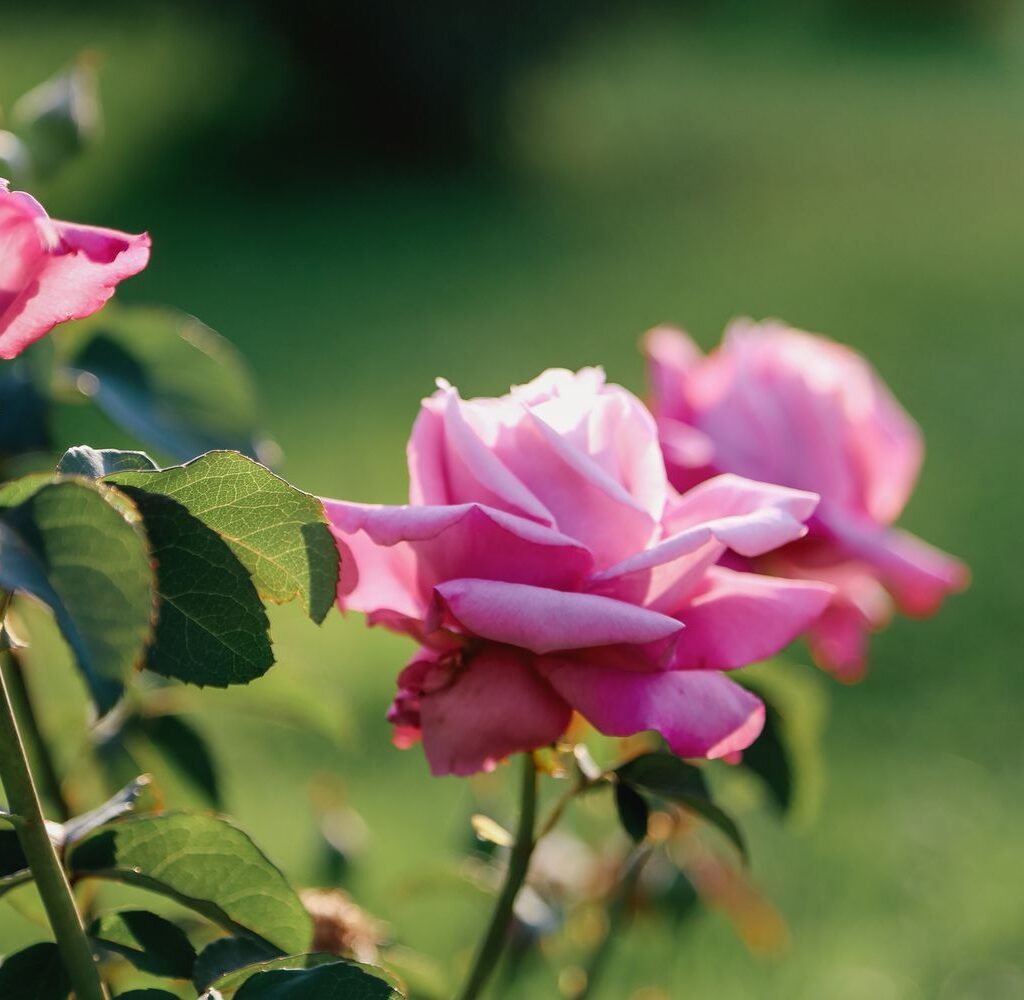
4. Natural Mulching and Soil Care
Healthy soil and mulching reduce pest problems:
- Organic Mulch: Straw, shredded leaves, or compost reduces weeds and maintains soil moisture, discouraging pests like slugs and beetles.
- Beneficial Microbes: Compost and organic amendments improve soil health, boosting plant immunity.
- Crop Rotation and Diversity: Interplant roses with vegetables or herbs to confuse pests and reduce infestations.
Tip: Mulch should not touch the base of the rose stems directly to prevent fungal growth.
5. Companion Planting for Pest Control
Companion planting enhances both aesthetic appeal and pest resistance:
- Borage: Attracts pollinators and deters tomato and rose pests.
- Chives and Garlic: Repel aphids naturally.
- Tansy: Deters beetles and ants.
- Nasturtiums: Trap pests away from roses, acting as a decoy plant.
Tip: Companion plants also provide flowers, fragrance, and color diversity alongside your roses.
6. Beneficial Insects and Biological Control
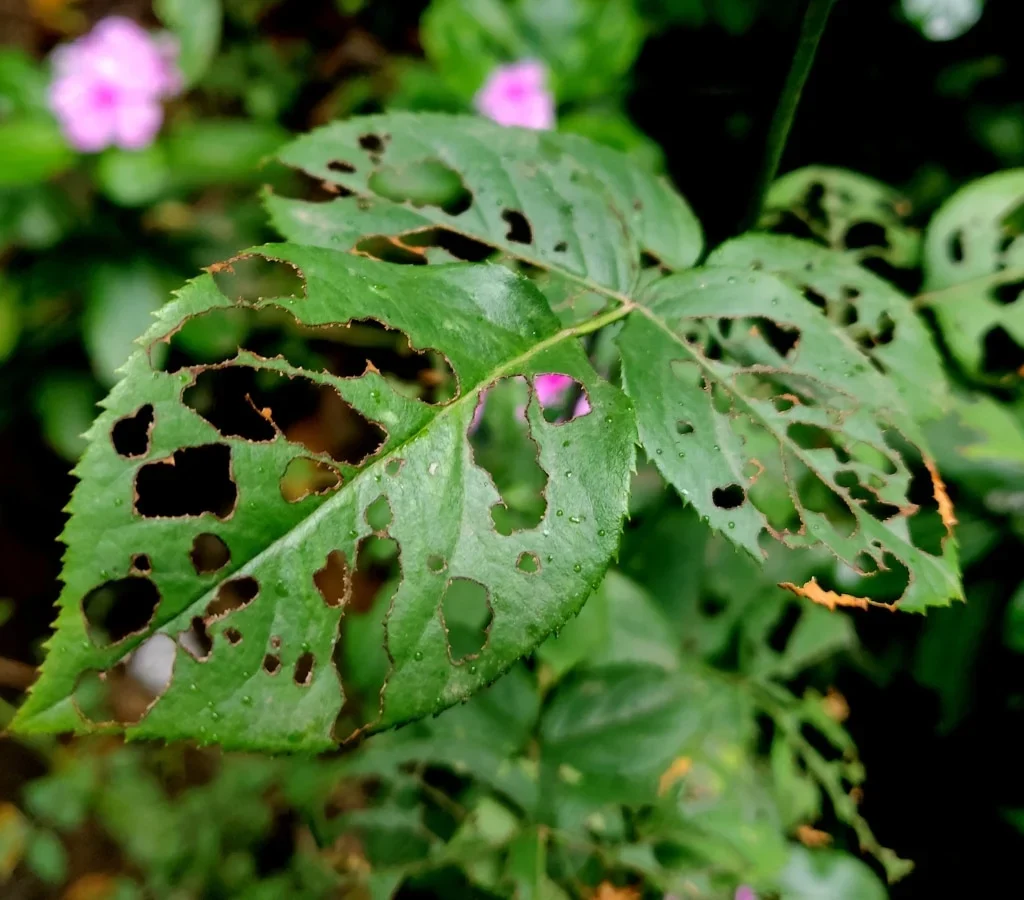
Encourage natural predators to manage pests sustainably:
- Ladybugs: Eat aphids and mites.
- Lacewings: Feed on aphids and small caterpillars.
- Parasitic Wasps: Lay eggs inside pest larvae, naturally controlling populations.
- Predatory Beetles: Consume scale insects and larvae.
Tip: Avoid broad-spectrum insecticides that kill beneficial insects; they help maintain a balanced ecosystem.
7. Regular Monitoring and Maintenance
Consistent care is crucial for keeping roses pest-free:
- Inspect leaves, stems, and buds at least twice a week.
- Remove and destroy infested or damaged parts immediately.
- Rotate natural sprays and remedies to prevent pest resistance.
- Check the undersides of leaves where pests often hide.
Tip: Early detection prevents minor problems from escalating into major infestations.
8. Seasonal Strategies
Pests vary with seasons, so adapt your approach:
- Spring: Monitor for aphids and spider mites; encourage pollinators.
- Summer: Watch for beetles and thrips; increase watering during heat.
- Autumn: Prune old stems and remove fallen leaves to reduce overwintering pests.
- Winter: Protect dormant roses from extreme cold and inspect for scale insects.
Tip: Seasonal awareness helps prevent pest buildup and maintains rose vitality year-round.
9. Natural Fertilization to Boost Resistance
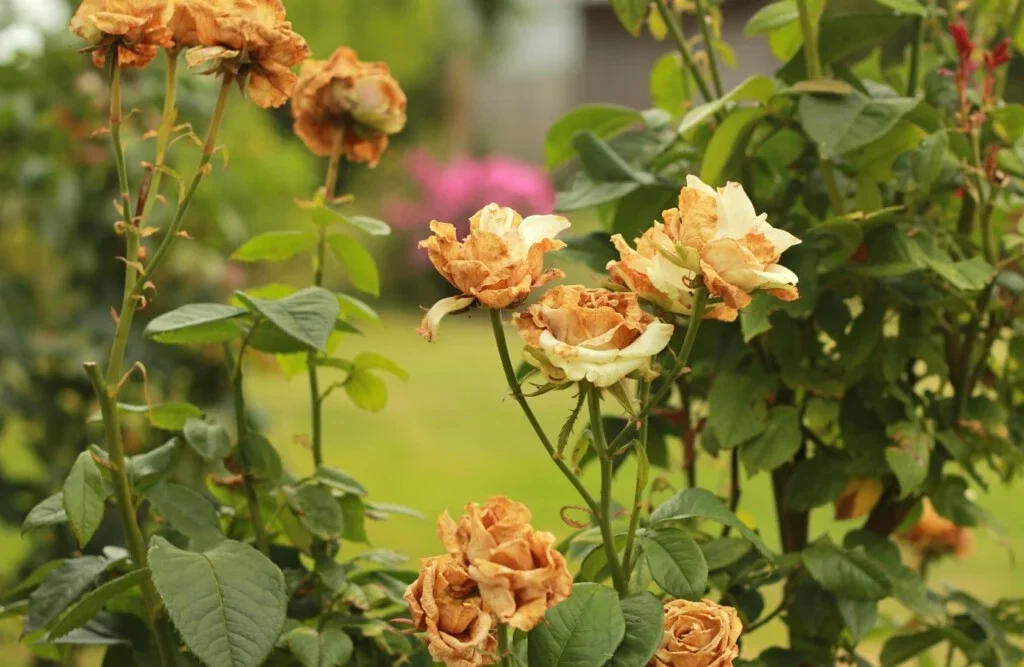
Healthy, well-fed roses are more resistant to pests:
- Organic Fertilizers: Compost, manure, and worm castings provide slow-release nutrients.
- Liquid Fertilizers: Fish emulsion or seaweed extract boosts growth and flowering.
- Balanced Nutrition: Ensure adequate nitrogen for leaves, phosphorus for flowers, and potassium for overall plant health.
Tip: Avoid over-fertilization, which can make roses more attractive to pests.
10. Creating a Balanced Rose Garden Ecosystem
A thriving rose garden incorporates diversity, natural pest control, and sustainable practices:
- Mix flowers and herbs to attract beneficial insects.
- Use mulch and organic amendments to improve soil health.
- Apply natural sprays and maintain regular pruning and hygiene.
- Encourage natural predators to reduce reliance on chemicals.
Tip: A balanced ecosystem naturally minimizes pest problems and enhances overall plant vitality.
Conclusion
Keeping roses pest-free naturally requires a combination of prevention, observation, and sustainable care. By understanding pest behavior, maintaining plant health, and using organic sprays, companion plants, and beneficial insects, gardeners can protect roses without harming the environment or pollinators.
Key takeaways:
- Identify common rose pests and monitor plants regularly.
- Maintain healthy soil, proper spacing, and adequate watering.
- Use natural remedies like neem oil, garlic, soap, and chili sprays.
- Encourage beneficial insects to naturally control pests.
- Practice pruning, deadheading, and hygiene to reduce infestation sites.
- Employ companion planting to deter pests and enhance beauty.
- Adjust care seasonally to address varying pest pressures.
- Fertilize naturally to strengthen plants against pests.
- Mulch to retain moisture and protect roots.
- Foster a balanced ecosystem to sustainably maintain rose health.
By adopting these practices, gardeners can enjoy lush, vibrant, and pest-free roses that enhance their garden’s beauty, fragrance, and charm—all without relying on harmful chemicals.
